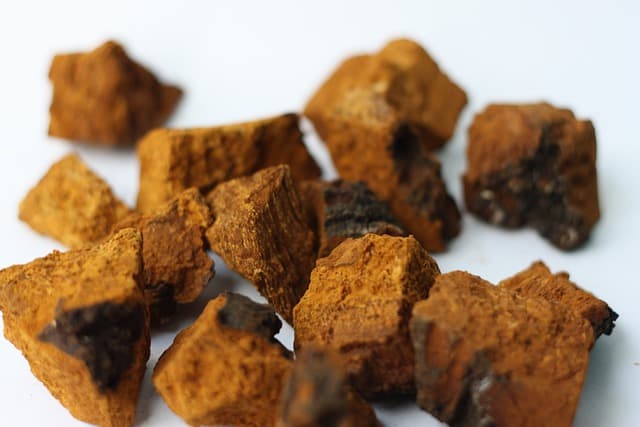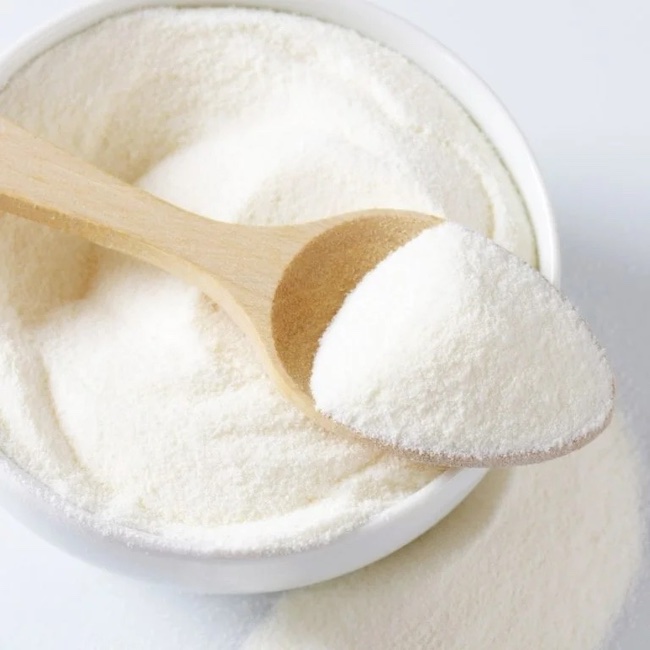
Chaga mushrooms (Inonotus obliquus), also known as birch canker, black mass, cinder conk, clinker, and conk rot, grow on birch trees in Asia, Canada, Europe, and the Northeastern United States. It is a parasitic growth. It is believed that Siberian Russian people were supposedly the very first people to discover and reap the health benefits of chaga mushrooms in the 16th Century.
Safety
Chaga mushrooms resemble a clump of dirt or burnt charcoal but have an inner orange coloring which sets them apart. Chaga has many purported benefits in natural medicine, which will be explored here. It should be noted that Chaga mushrooms have not been extensively scientifically studied to test efficacy or to test the safety of usage, and those interested in chaga mushrooms for health benefits should do so at their own discretion, as well as consult your physician.
Benefits

Chaga mushrooms contain large amounts of melanin, which cause the exterior to turn black upon sun exposure. Melanin supplementation is claimed to protect hair and skin from sun damage and reduce age spots. Additionally, having good amounts of melanin in the body have also been claimed to reduce the risk of skin cancer, support fertility, prevent folate depletion, support metabolic processes, as well as prevent serious neurological disorders.
Chaga mushrooms also contain some of the highest levels of oxalate of any living thing. For this reason, chaga should be consumed in moderation, because high oxalate levels are linked to kidney stones and osteoporosis. In addition, kidney or liver damage or disease or cancer is a possible risk, due to chaga mushrooms high concentration of potassium and magnesium, which are both naturally excreted from the kidneys and liver. Overconsumption can strain these organs.
Many practitioners of natural medicine report attractive health benefits of consuming chaga mushrooms. Similar to turmeric, chaga mushrooms are purported to fight inflammation (and therefore alleviate arthritis), as well as prevent cancer or slow progression of cancer.
Chaga mushrooms have been called the “cancer fungus.” Additionally, chaga mushrooms are said to lower blood sugar, lower bad LDL cholesterol, and lower blood pressure, in addition to boosting immune function. Chaga is high in many nutrients, including amino acids, b complex vitamins, calcium, cesium, copper vitamin D, iron, magnesium, manganese, potassium, rubidium, selenium, zinc.
Due to the high concentration of melanin, some believe it can boost the levels of melanin in our skin, helping to protect us from sun damage, wrinkles, and skin cancer. These reported benefits are all not heavily studied. However, melanin is an antioxidant, which helps fight free radicals in your body that cause illnesses including diabetes, heart disease, and cancer. This would support most of the claims made about the health benefits of chaga mushrooms.
Side Effects
Chaga mushrooms also have reported anti-fungal, anti-viral, and anti-candida benefits, as well as some reported potential attractive “side effects.” Due to chaga’s effect on cardiovascular health, many people report increased energy, vitality and an increased metabolism.
Chaga has also been reported to boost the endocrine system, helping the body produce melatonin and serotonin, helping mood and sleep, including deeper R.E.M. sleep which helps with body regeneration and cellular healing. Because chaga can increase urination, it is claimed to help “detoxify” or “flush” the body of toxins, heavy metals, and other contaminants. Finally, vivid dreams and an increased clarity upon waking have been reported as well. Chaga mushrooms have many unstudied beneficial side effects.
Chaga mushrooms have been used in traditional medicine for centuries in Russia and northern European countries. For this reason, chaga is believed to be well tolerated. However, there are limited human studies of chaga mushroom safety. Chaga can interact with some common drugs, such as insulin due to its impact on blood sugar, or blood thinners due to chaga containing a protein that can prevent blood clotting.
Chaga can cause your immune system to become overactive, and therefore, those with autoimmune disorders should use caution. Finally, those allergic to birch should avoid chaga mushrooms since they grow on birch trees. No research has been done on use by pregnant or breastfeeding mothers, so pregnant or breastfeeding mothers should avoid consuming chaga mushrooms. Chaga is not monitored by the FDA, so only purchase chaga mushrooms from reputable sources, and always exercise caution by checking with your physician before beginning any chaga mushroom regimen.
How to take

Chaga mushrooms are typically dried and then ground into powder which can be used in pill form, as well as more commonly found in teas, extracts and tinctures. A typical dose of chaga mushroom depends upon the form you are consuming. Chaga Tea can be taken daily but should not exceed two 6 oz cups.
Chaga powder is typically dosed in 1-2 tsp. doses (2.5g) per 6 oz of boiled water, or directly sprinkled onto food. Powdered chaga should not exceed 3.6 g per day. Chaga tincture is typically taken in two to three droppers (2.2ml-3.3ml) under the tongue or in a beverage. This can be done two to three times per day.
Chaga mushroom powder is less commonly packed into 1g capsules and can be taken in one to two pill doses, once per day. The World Health Organization does state that chaga mushrooms are Generally Recognized As Safe (G.R.A.S.).
Conclusion
Chaga mushrooms have been used since the 16th century. Though there are limited studies available, and few involve humans, it is believed to be safe to consume in certain doses. If proper dosage is observed, chaga mushrooms can have many potential health benefits, including preventing cancer and inflammation, and aside from that, chaga mushrooms contain high doses of many essential micronutrients as well as fiber. Chaga mushroom supplementation or consumption can have a wonderful benefit to your health.





